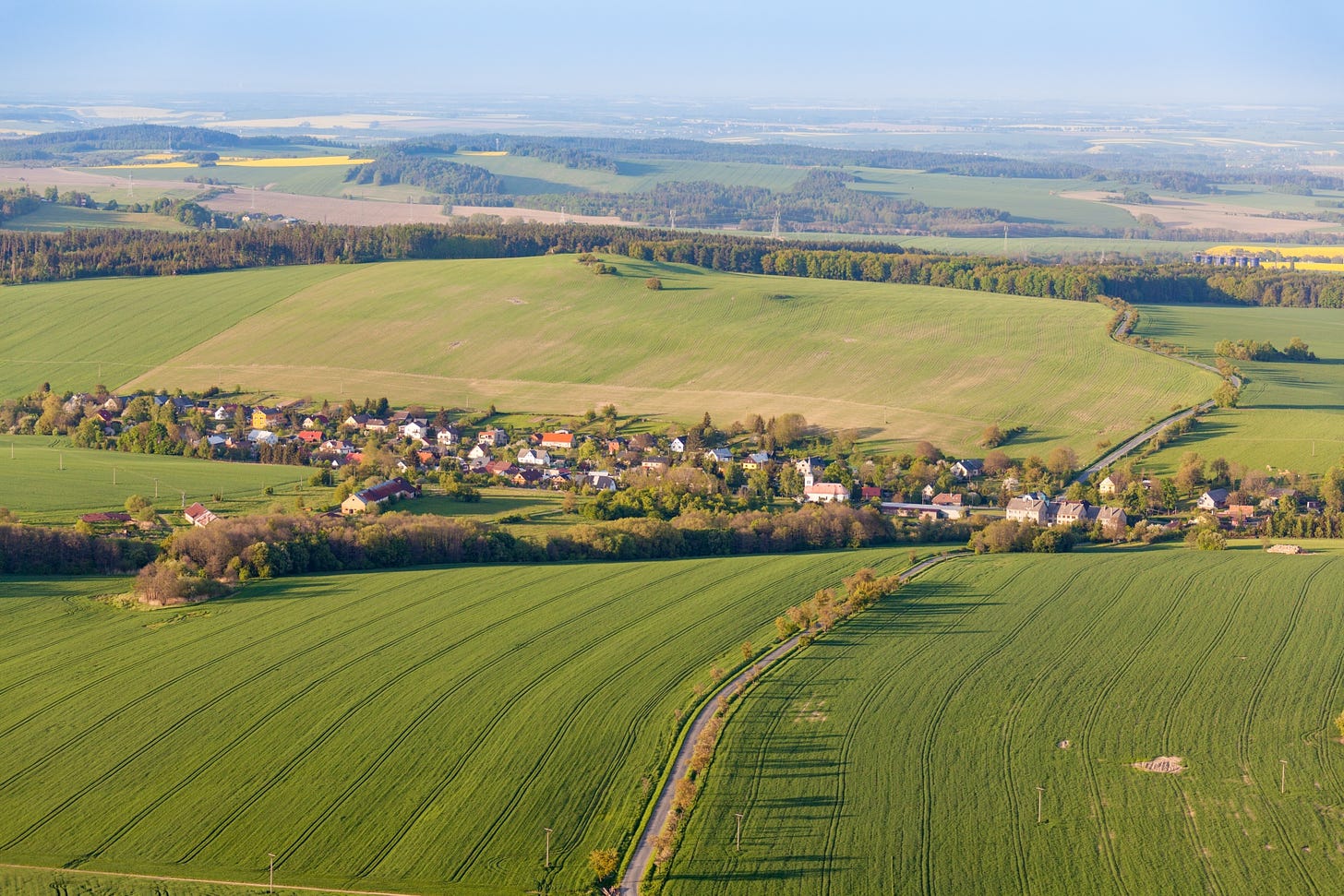What 2024 Means for Rural America
While the messaging needs some major long-term improvements, the White House & Congressional Democrats have delivered for Blue-Collar Industrial & Rural America.
This is part of a larger “mini-series” on what 2024 means for various communities across the country. More of these to come in the future weeks. And on a brief side note, here are some filing deadlines for future candidates—including for collecting signatures to appear on the ballot itself this year:
Some 2024-related posts will highlight points made in previous blog posts, so feel free to check out my past work on my Substack and Medium pages. Also feel welcome to reach out to me on LinkedIn with any comments or questions.
At the 1984 Democratic National Convention, then-New York Governor Mario Cuomo famously emphasized a “Tale of Two Cities” as a way of describing American society back then. He was right in 1984, and he is even more accurate today.
In recent years, there has been more of a discussion of the growing divide between Urban America & Rural America. Over the past 4 and a half decades, the challenges facing Rural America have only gotten worse. 2024 will be a watershed election cycle, not just for who we are as a country in our values, but how we will address the systemic issues and tests of our time.
This is part of meeting the moment, when President Joe Biden offers a vision for 2024 as he did in 2020 with Build Back Better. When he offers a game plan like what Franklin Roosevelt proposed in 1932 with the New Deal, and Lyndon Johnson did in 1964 with the Great Society. President Biden needs to promote his track record and formulate a vision that exemplifies his past campaign promises and his commitment to bring forth what I call “change through experience.” More than that, he needs to get out into the public and make his case directly to the people.
No doubt the Build Back Better Agenda has unquestionably accomplished a great deal. No doubt causes like consumer protection and workers’ rights serve the best interests of urban Americans and rural Americans alike. No doubt bold visions and initiatives like a Progressive Promise, a 50-State Strategy, election law litigation, a remobilization of grassroots campaigning, and generational change on a whole new and perhaps unprecedented scale, will rally a unique coalition with down-ballot ramifications, and serve the people well. And let’s not forget that President Biden’s agenda will help us avoid more division, greed, impunity, and extremism.
Contrary to what people are saying, or expecting, a successful election cycle for either Democrats or Republicans will depend on support in Rural America.
2024 could not show a greater test between climatic US Senate battles, marquee US House district matchups, and down ballot competition for both statewide offices & state legislatures. Places like Montana do not have suburban electorates to offset rural base numbers. Like it was in 2016, it will be very hard for Democrats to substitute white-collar, suburban voters for the troves of blue-collar, working class Democratic voters who have drifted in large numbers to Trump’s persona and illusory GOP promises.
But like many, I also do not believe voters who had supported Obama-Biden in 2008 and 2012, and went to Trump in 2016 and 2020, are irredeemable. There are formulas in both campaigning and party organization to counter that—as has been mentioned before here.
Just as White-Collar America has been focused on immensely, Blue-Collar America cannot be taken for granted by the Biden-Harris campaign. Real outreach and messaging needs to take place. Because no amount of money—even from a political action committee funded by Texas billionaires like John Arnold—is going to buy votes in these places.
Middle America—especially in the Industrial Midwest and the Despaired South—are in the thick of the failures of Reaganomic trickle-down and the irrelevant MAGA culture wars. They are the centers of American deindustrialization and mechanization that has left millions behind in the 21st century. Large, industrial corporations and Big Agriculture have squeezed out what was left of the blue-collar middle and working classes.
Unemployment and poverty impacts these places greatly, and jobs that remain today pay almost nothing to what existed a generation or two ago. Life expectancy decreases greatly while healthcare access goes down and costs go up. Higher education is nonexistent and public education is threatened, with school districts at risk of being in financial ruins, and buildings in risk of closure or consolidation. The climate crisis threatens agricultural production and food security, while private sector outsourcing and “cost-cutting” hollows out the manufacturing base that is still left. Infrastructure and transportation is outdated, and housing access remains scarce. Meanwhile, opium & fentanyl addiction is devastating these same communities.
These issues are even worse for the African Americans, Hispanics and Latinos, Asian Americans, Native Americans, and Pacific Islanders who live outside of the metropolitan areas—and who deal with racial disparities relative even to poor white Americans in rural and exurban areas (even more so in the South).
It is no coincidence these places have felt taken for granted after decades of broken promises and constant inaction. Fortunately, President Joe Biden has a record to show how he has lifted up Rural America.
With close supervision and coordination, broadband is being laid out all across the country-with the Affordable Connectivity Program lowering costs for the Internet. Electric grids are being modernized. Tax credits for small town America are getting out there. More funding has been sent to rural colleges and universities (including HBCUs). There is expanded access to many services, like childcare (with Medicaid funding). There are the measures to strengthen sustainable agricultural practices, measures to protect the rights of farm workers, the calls to “keep public lands in public hands,” and supply chain reshoring. This is a White House that is delivering big time for Rural America.
There is more a Biden White House can do with help on Capitol Hill and in the states. The scourge of rural hospital closures can come to an end. Education opportunities can be preserved. Flyover Country can be a global leader in green manufacturing and renewable electricity generation. The Midwest and the South can lead in technology with new advancements in Internet access, microchip production, quantum computing, nuclear fusion, and biotech engineering. Antitrust enforcement and a labor rights platform can strengthen both rural households and industrial workers alike across our country.
Clearly, Donald Trump was not and will never be the President of Working Class America. His agenda will only help the rich and hurt the middle class—and leave America’s blue-collar class further behind. The Republican Party has attempted to market itself as the party of the working class. This is a sham. The Democratic Party has and can show otherwise. The stakes of 2024 for the prosperity of places like Berlin, New Hampshire, or Burlington, Iowa, have never been more important than right now. And no one—Democratic or Republican—should be dismissing Rural America for this upcoming election cycle.






